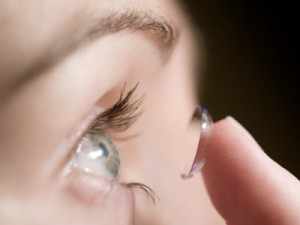Soft daily use contact lenses have been available since 1995. The obvious advantage of replacing contact lenses daily is placing a clean, sterile, well-hydrated lens in your eye each morning. Even with the best cleaning and hygiene; lenses get dirty, lose their ability to stay wet and protein adheres to the surface. These factors reduce comfort, cause dryness and decrease lens clarity.
The other advantage is the elimination of contact lens solutions and the complications resulting from solutions. The contact lens solution industry changes as often as the lenses. Most contact lens complications result from sensitivity to the solution or poor compliance. Eliminating this component from the care of contact lenses, resolves multiple problems.

Probably the greatest advantages to patients is the convenience. No more contact lens solutions, no contact lens cases, just a clean, clear and comfortable lens each day.
For intermittent wearers, someone who uses lenses for sports, social events or infrequently, the daily lenses are easier to keep on hand, in a gym bag, briefcase or backpack. No more trying to remember how old a lens is, or opening the case to find dried up lenses.
One of the disadvantages is that not all prescriptions are available in daily disposable lenses. There are some toric lenses (astigmatism correction) in limited powers but not enough. Currently there is not a decent multifocal daily contact lens (although, this will be available in the future). The second disadvantage of daily replacement lenses is they are not designed for overnight use and must be removed before sleeping.